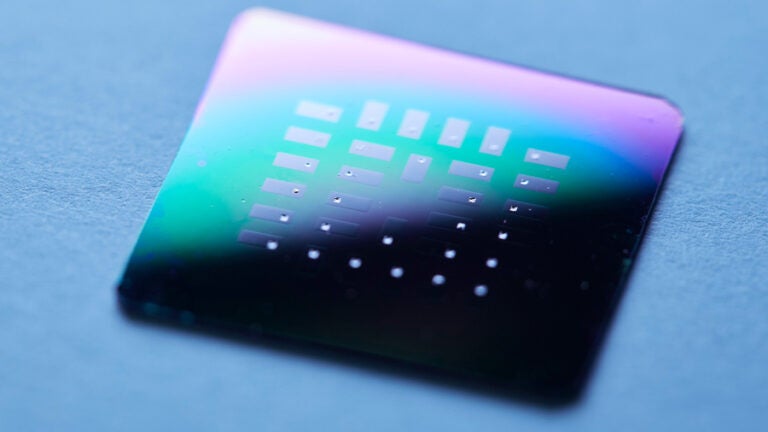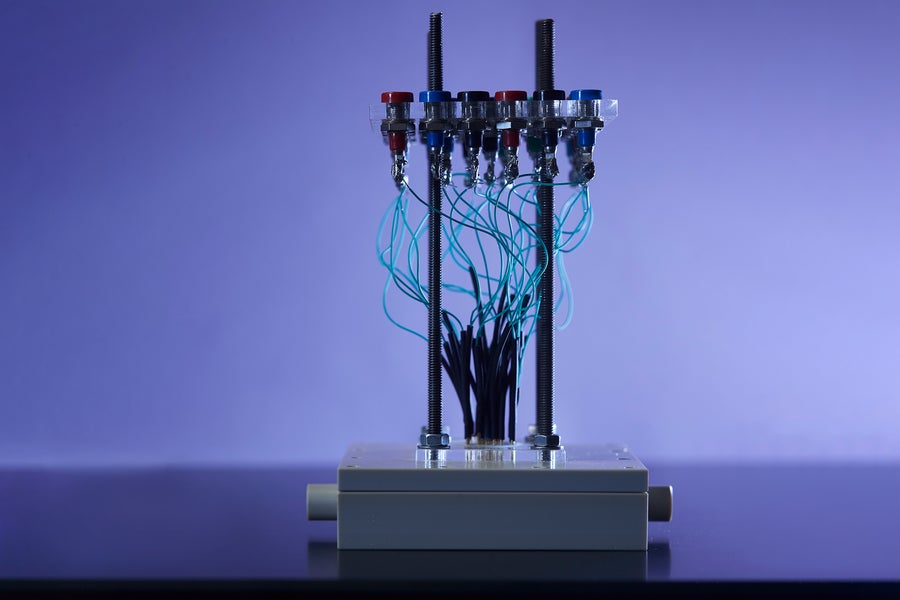Technological innovation
The glucose gas mobile is 1/100 the diameter of a solitary human hair and could electricity miniature implants inside the human entire body.

What if there was a piece of ultrathin technological know-how that was driven by sugar from the human entire body?
Researchers at MIT and the Technological University of Munich are answering that query with a new piece of mini tech — a little, still strong, gas mobile.
This new and enhanced glucose gasoline cell takes glucose absorbed from food items in the human system and turns it into electric power, in accordance to MIT Information. That electricity could power smaller implants while also being able to face up to up to 600 levels Celsius — or 1112 degrees Fahrenheit — and measuring just 400 nanometers thick.
400 nanometers is around 1/100 of the diameter of a single human hair.

The product itself is made from ceramic, allowing for it to be made at this sort of a minuscule size and withstand extremely-very hot temperatures.
With a piece of technology that slender, it could be wrapped all over implants to ability them although harnessing the glucose identified in the body.
“Glucose is all over the place in the body, and the strategy is to harvest this quickly readily available electricity and use it to electricity implantable products. In our function we clearly show a new glucose gas cell electrochemistry,” said Philipp Simons, who designed the layout as part of his doctorate thesis.
Jennifer L.M. Rupp, Simons’ thesis supervisor, stated while a battery can acquire up 90% of an implant’s volume, this engineering would be a electricity source with no “volumetric footprint.”
Rupp very first experienced the concept for the fuel cell soon after having a glucose test around the close of her being pregnant.
“In the doctor’s place of work, I was a incredibly bored electrochemist, thinking what you could do with sugar and electrochemistry. Then I understood, it would be excellent to have a glucose-driven solid point out machine. And Philipp and I met about coffee and wrote out on a napkin the to start with drawings,” she stated.
The “basic” glucose gasoline cell is designed up of a prime anode, a middle electrolyte, and a base cathode. The staff at MIT looked exclusively at the middle electrolyte layer in order to make improvements to current types of the system.
The middle layer is usually built of polymers which can degrade at substantial temperatures producing them tough to use for implants that will have to endure an very sizzling sterilization system. Polymers are also difficult to function with on a miniature scale.
Which is when researchers started to turn their consideration towards ceramic as their star content.
“When you imagine of ceramics for such a glucose gas mobile, they have the advantage of extensive-time period security, small scalability, and silicon chip integration. They are tough and robust,” stated Rupp.
The specific ceramic material utilised is referred to as ceria.
“Ceria is actively examined in the cancer exploration group. It is also similar to zirconia, which is made use of in tooth implants, and is biocompatible and safe and sound,” explained Simons.
The researchers “have opened a new route to miniature electrical power sources for implanted sensors and possibly other capabilities,” claims Truls Norby, a professor of chemistry at the College of Oslo in Norway. “The ceramics utilised are nontoxic, cheap, and not least inert the two to the problems in the human body and to circumstances of sterilization prior to implantation. The thought and demonstration so far are promising indeed.”
Newsletter Signup
Stay up to day on all the most up-to-date information from Boston.com



More Stories
Attendance at IEEE’s STEM Summer Camp Breaks Records
Best Free Android Emulators for Windows 7, 8.1, 10 PC in 2021
What is Bitly & How Does It Work? –